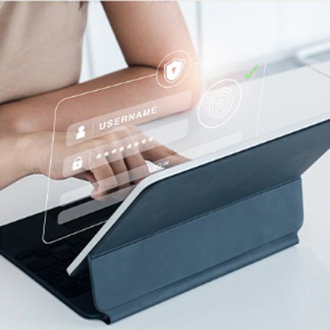Mobile Security Tips
Why securing mobile devices is so important?
The portability of mobile devices has made people heavily reliant on them. With their enhanced functionalities, mobile devices are used to carry out our daily activities such as surfing the web, accessing emails, sharing files, instant messaging, using applications, and most importantly, mobile banking.
Given all these functionalities, cybercriminals are increasingly targeting mobile devices. Smartphones are susceptible to physical threats such as theft and cyber threats, including malware, phishing, and unauthorized access. If attackers gain access to your mobile device, they will have an eye on your messages, your banking accounts, and can steal sensitive data, including OTP (One-Time Password) during the authentication process.
How to Secure Your Mobile Device?
- Use strong passwords and enable biometric authentication
This is your first line of defense. Strong passwords and biometric features, such as fingerprint and Face ID, make unauthorized access nearly impossible. Your passwords should be complex and a minimum of eight characters. - Beware of calls asking for your sensitive information
Hackers often use a direct approach to gain access to your personal information. This is called vishing, where a scammer calls you and pretends to be from your bank. They may warn you of an issue with your account or offer you a service and ask for your credit card, debit card, or your personal details. It is important not to fall for this fraud. Instead, call your bank directly and report such fraudulent attempts. - Be cautious of text message scams that may pretend to be from your bank
Beware of text phishing or smishing, where you receive a text message that appears to be from your bank asking you to click on a link to resolve an issue with your account. However, the message is not from your bank, and the link will either trick you into providing personal information or install malware that steals your personal information without your knowledge. Stay vigilant and never provide personal information or click on links from suspicious text messages. - Register devices you trust
The iBank service offers a secure way to access your banking account. You can register up to three trusted devices to access your account. In case someone steals your password and tries to access your account, an additional OTP (One-Time Password) will be sent to your registered mobile number for elevated authentication. Make sure to only register the devices that you trust. - Avoid using public or free Wi-Fi
Free Wi-Fi networks, such as those in the airports, hotels, and shopping centers, can allow cybercriminals to intercept your sensitive information. To protect against Wi-Fi hacking, always use trusted networks; If you’re unsure about the security of the network you’re connected to, you may use a VPN (Virtual Private Network) client. As a matter of caution, you should also turn off wireless connectivity (Wi-Fi and Bluetooth) when you are not using them. - Be vigilant of fraudulent applications
Be aware of falling as a victim to fraudulent apps! Stay vigilant and exercise caution when downloading and installing applications. Make sure to download applications only from trusted sources. Please carefully evaluate the permissions that applications are requesting and only grant permissions that are necessary and reasonable. - Install an Antivirus application
Install a reputable antivirus application to protect your device from malware threats. Nowadays, antivirus applications offer a variety of security features, such as securing your storage media, safe browsing, VPN connectivity, password management, and more. - Keep backups
It is unfortunate but true that sometimes bad things happen. If your mobile device gets compromised, you could end up losing all your data. That's why it's important to keep a backup of your data so that you can restore it in case of such an event. Save your backup data to another reliable source such as Google Drive, iCloud, OneDrive or any other service that you trust. - Update your phone regularly
Make sure to keep your phone updated with the latest security patches and install them as soon as they become available.






